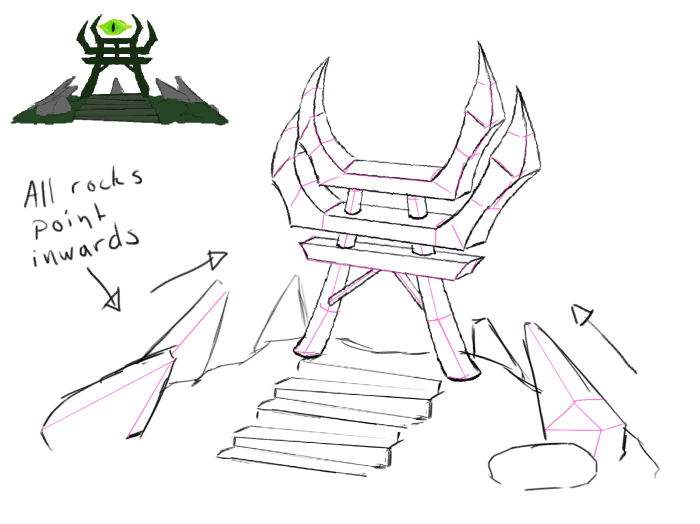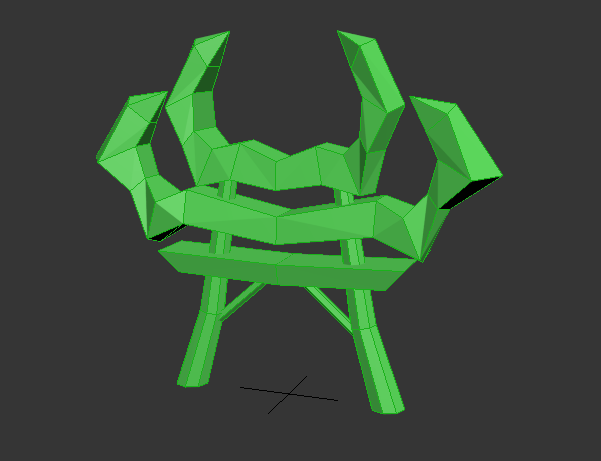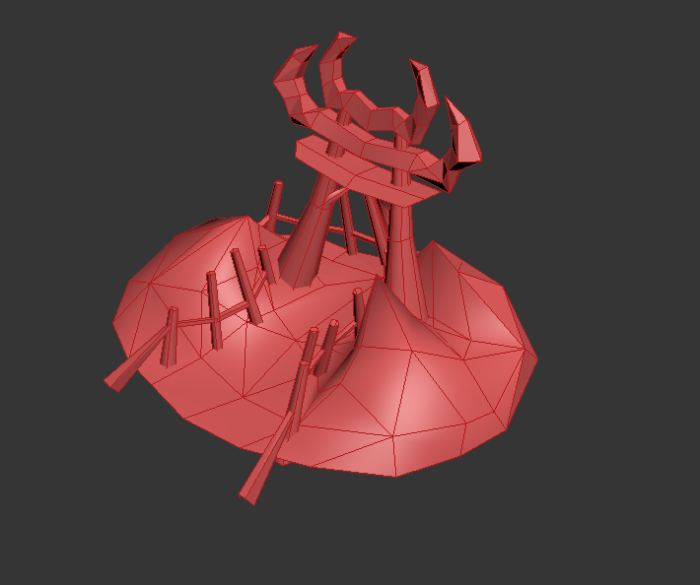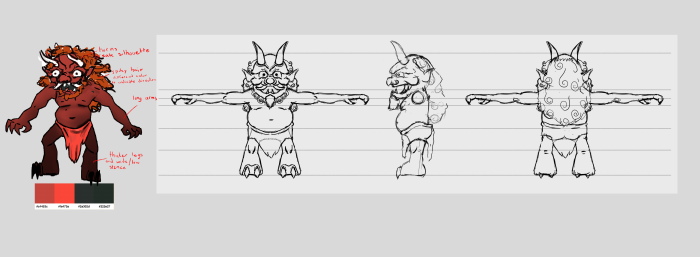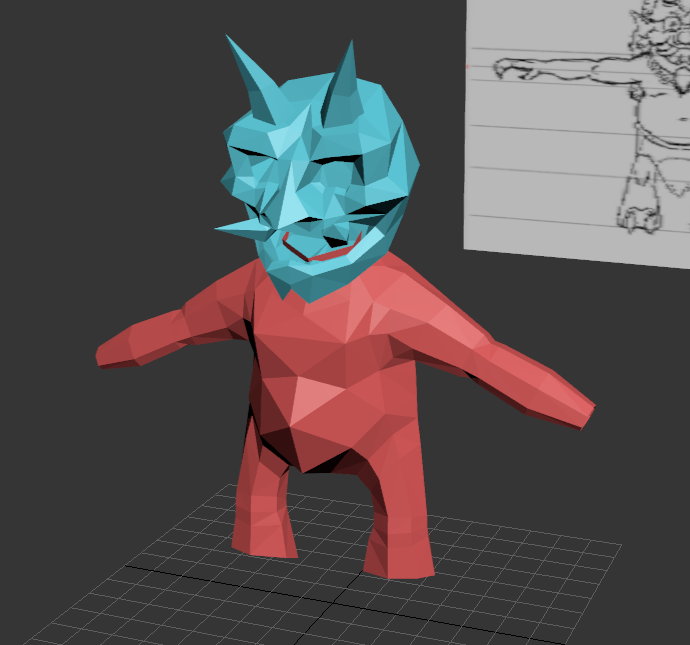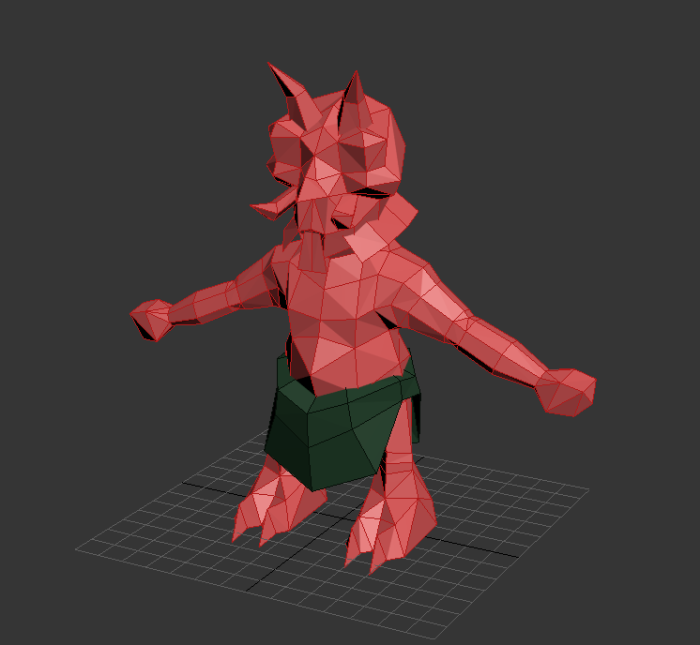Hello again!
I am Peo Johansson, a graphical artist and resident sound designer on team Ninja Slice. We’re working on the game concept The Summoning.
I’ve already gone over the game concept itself in the previous blogs, so for this blog post I’ll just jump straight to the point. This time, I’ll write about a 3D model for a character in our game that I’ve worked on. To be specific, the second type of minion that the real time strategy side player control.
Unlike the minion type that I wrote about in an earlier blog post, the appearance of this one came about a bit differently. When I first drew the concept art that was eventually going to be used for this minion, my goal was to make a design for the RTS player’s avatar. The idea was that at the end of the level, the human player would summon the demon player to fight them.
Already at the beginning of the project we knew that we probably wouldn’t have time to put this particular feature into the game. So me working on the design for the demon player was a prioritizing error on my part.
Our producer suggested that we could use this design for the so-called “Elite minion” instead, and I agreed.
The next step was then to refine the design and to produce a turnaround image to help with the 3D modelling process.
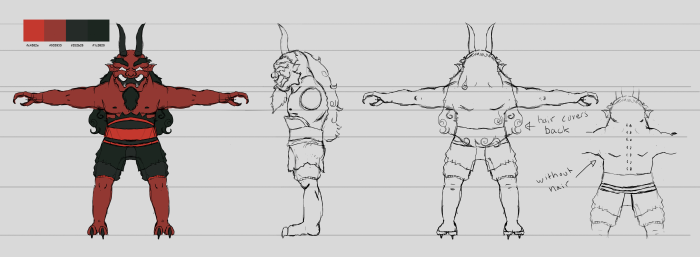
As this character model was to be much larger than the previous minion, it was important to get the edge flow right. Edge flow is, simply put, how the edges between polygons connect with each other. Good edge flow is absolutely crucial to be able to easily rig, skin, and animate a 3D character model without distortions, especially around areas like the shoulders, knees, crotch and so on. For this character I looked at a lot of references for good edge flow in humanoid characters, and tried my best to adapt them to the anatomy of this creature.
As a side effect of ensuring good edge flow, I ended up going past our internal triangle count with quite a bit. However, as there won’t be many of this character on the screen at once, we decided that this was okay in this particular case.




